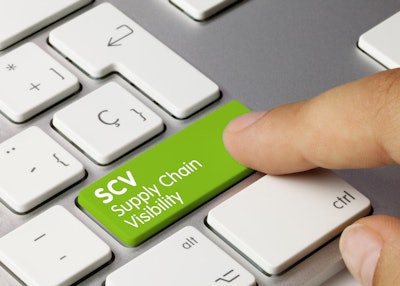
Sustainability is more than a buzzword for brands around the planet. Increasingly, companies are acting more intentionally when it comes to sustainability-related pursuits. An article published by Harvard Business Review notes that more than 2,000 businesses have set carbon-neutrality objectives and nearly all giant corporations now release annual sustainability retrospectives.
Another way that companies can prioritize sustainability is through having a transparent supply chain. Why is supply chain transparency important to brands that want to highlight sustainability in general? For one, “open” supply chains gain consumer trust. People appreciate being able to see the raw-to-retail journey of the items they purchase. In fact, buying sustainable merchandise — even at high price points — is a worthy tradeoff for around two-thirds of shoppers.
The second benefit of transparency in supply chains is that it can show a company’s willingness to be adaptive and agile. When businesses adopt new methods of environmental awareness as outlined by the United Nations Sustainable Development Goals or the United States Environmental Protection Agency, they make a big statement. These are not dated, inflexible legacy companies; they’re committed to transforming their operations to meet the unique needs of today.
Supply chain transparency has another advantage: It opens the door to connecting with like-minded innovative partners. Like a magnet, innovation seeks innovation. Therefore, brands that don’t hide their supply chains position themselves as potential collaborators with other brands equally as interested in sustainability, technology and greener practices.
Apparel and Textile Industry: An Eco-Friendlier Supply Chain Example
Though the apparel and textile industry hasn’t always had a reputation for sustainable supply chains, progress is being made. More and more, apparel and textile heavy-hitters are reinventing their supply chains.
They’re doing it all in front of the world so they can be examples and — from a purely economic and practical perspective — show consumers that they are, indeed, different. It worked well for Nike, which reportedly refined its supply chain habits and ended with a bump in revenue, according to Prologis research.
Of course, pulling back the curtain can seem challenging for apparel and textile companies at first. Many leaders hesitate to show how a shirt goes from natural ingredients through the processing and manufacturing stages required to bring it to market. Nevertheless, those that reveal the many ways they’re trying to be more sustainable throughout their supply chain are being seen as diversified, imaginative, compassionate and real.
Consumers aren’t necessarily looking for perfection; they’re looking for businesses interested in being at the cusp of necessary change. An apparel or textile brand that holds itself accountable doesn’t have to get everything right immediately to improve relationships with prospects, customers, employees, partners and other stakeholders. The brand only has to keep moving toward its desired mile markers to incur trust and grow a more positive reputation.
Steps to Achieve Transparency in Supply Chains
It’s one thing to acknowledge the importance of sustainability in supply chains through transparency. It’s another thing to know which strategies to take to become more transparent. If your company’s current supply chain logistics and practices aren’t as transparent as you’d like, you have a few ways to modify them. (These aren’t limited to apparel and textile providers, either.)
1. Untangle your supply chains.
A successful supply chain transparency strategy should be agile, strategically holistic and clearly identify and evaluate which stakeholder is responsible for each stage of the chain. However, that’s not possible to do without full-scale supply chain mapping.
You can always invest in software to help trace the various parts of your supply chain. A full-scale software program can help you create one source of truth for all your supply chain routes and stakeholders. Plan to spend time on this project. Unraveling supply chain knots can be complicated.
The upshot to taking the time to make this happen is that you’ll be better prepared to take the next steps toward becoming more transparent with your supply chain.
2. Identify your supply chain gaps.
Once you have a general sense of your supply chains, you can look around your supply network for gaps. Some may be obvious areas where you constantly have stumbling blocks. Others may be places of hidden concerns, such as relying on a single supplier when diversification might be more appropriate.
Finding the weak points will make you stronger. When you know what they are, you can close loopholes and make your brand more resilient. This process has a secondary benefit, which is that you’ll begin to tear down supply chain “silos” that exist within your organization.
It’s not possible to operate a transparent supply chain if you’re enmeshed in secrecy. As you move forward, any walls will begin to melt away, leaving you with the clarity you need to make future sustainable decisions.
3. Disclose your supplier partnerships.
Do you have well-established, strong relationships with your suppliers? You’ll need an excellent level of trust and communication to move to this next stage in becoming more transparent. Telling the world which vendors you use requires a great deal of camaraderie from you and the other parties.
To start moving toward a more visible supply chain, start internally. For example, you may want to set up an inventory management system or another piece of software so everyone in your business can see the supply chain in real time. Together, you and your suppliers can review all historic data and develop targets to better align your workflows.
Though not all suppliers will feel comfortable with this kind of openness at first, the best will understand what you’re trying to achieve on behalf of your company, its people and the consumers and communities you serve.
4. Share your supply chain’s existing and expected environmental footprint
Though all corporate sustainability reports are unique, they do tend to focus on environmental, social and governance (ESG) statistics. Not all your ESG standards will be supply chain driven. Some may, though. These metrics should be included in your reporting efforts as part of your commitment to sustainability disclosures.
An example might be talking about how you’ve driven down the carbon footprint by using new suppliers. Or, you might discuss the percentage of your packaging composed of recycled or biodegradable materials. Consider which ESG metrics matter and then keep tracking them.
5. Keep making — and announcing — tweaks and updates
According to McKinsey & Co., supply chain disruptions of one month or longer will occur about every 3.7 years. In other words, it’s not a matter of whether but when you’ll run into snags. You’ll be less apt to be surprised when supply chain problems occur if you stay on top of your supply chain progress
By constantly identifying new targets and making goals, you can help build a future-forward supply chain that’s not just sustainable and transparent but reliable. Even if the process seems uncomfortable today, it will become more intuitive. Embracing sustainability as a corporation happens from many angles, including those related to your supply chain. If you’re not currently operating on an “all transparency, all the time” model, you might want to rethink your efforts. A visible supply chain today can be a gateway to a more flexible and profitable tomorrow.




















